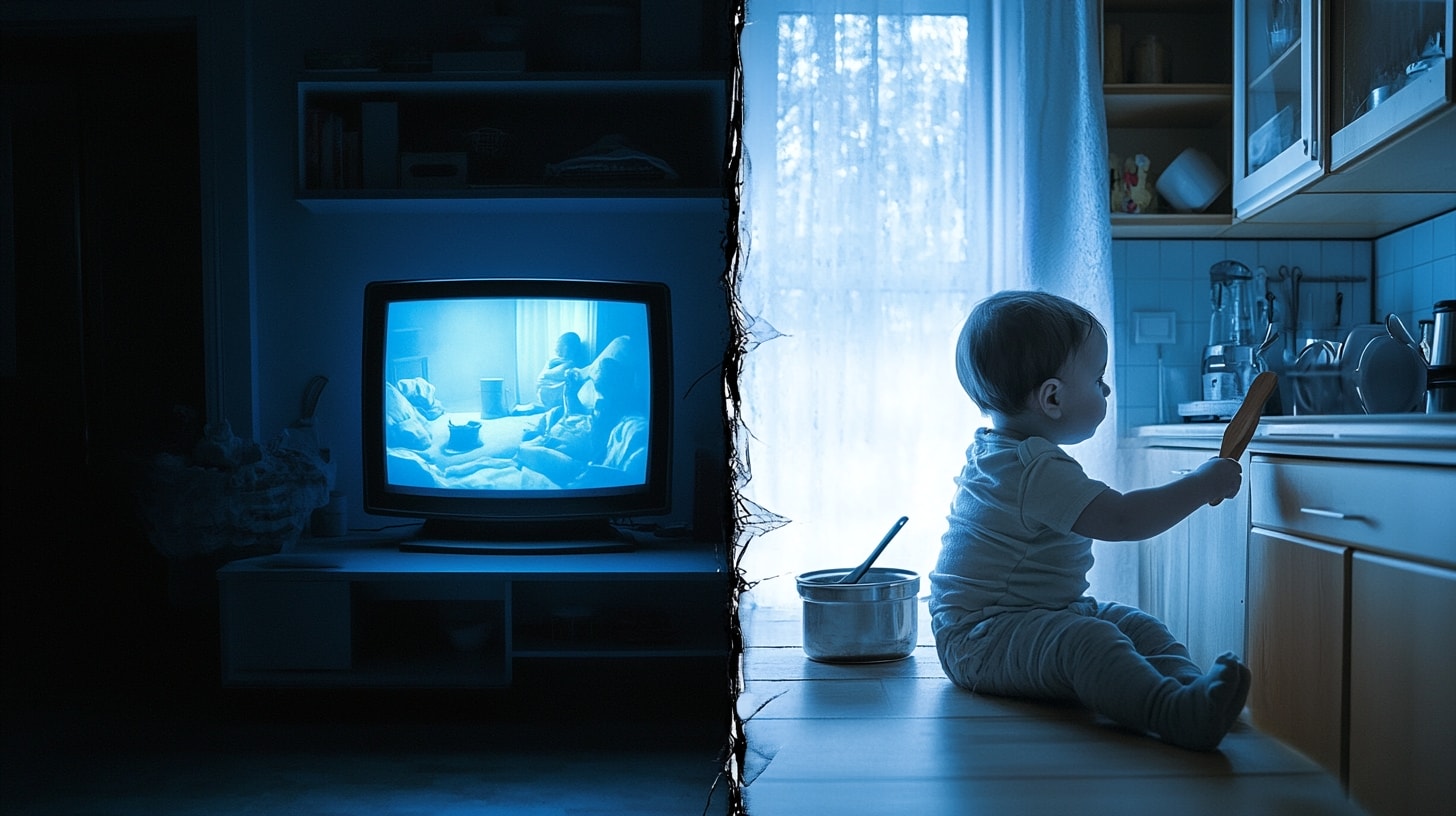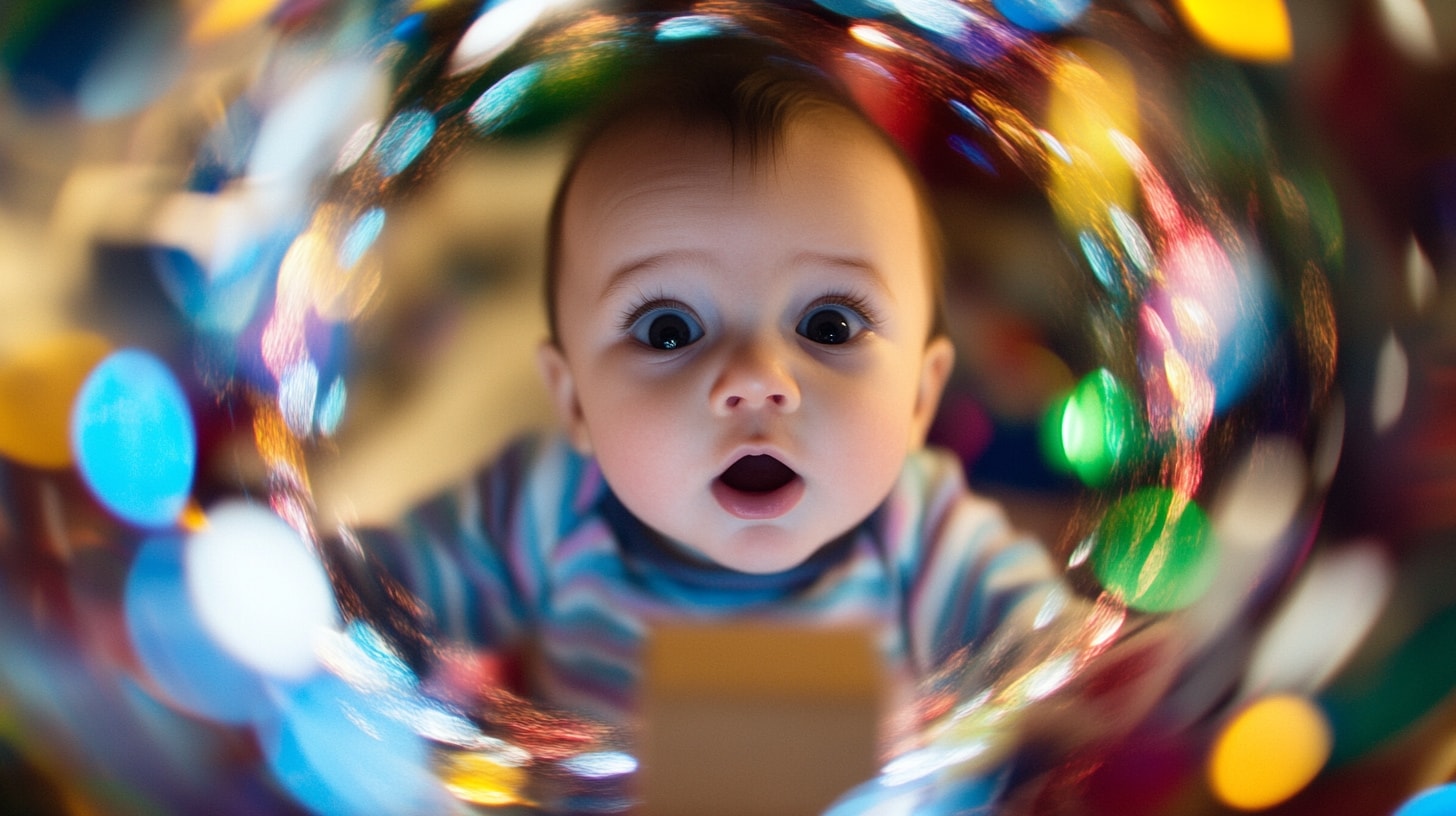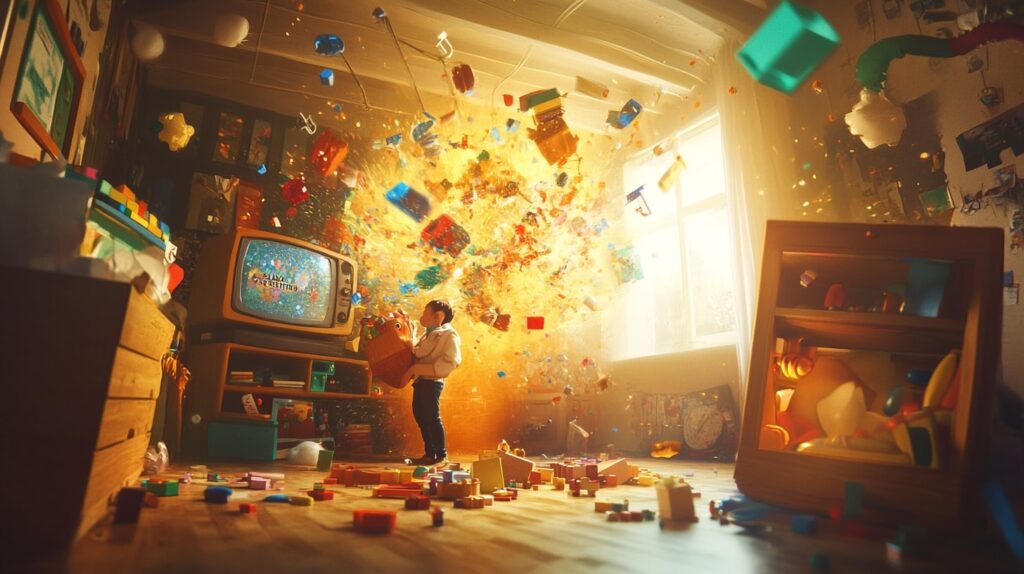Table of Contents
TogglePlaytime Revolution: Shocking Truths About How NOT to Play with Your Baby (And What to Do Instead)
Listen up, new parents! I’ve got some mind-blowing news that’s gonna flip your world upside down faster than a diaper change gone wrong. Remember all those cute little toys you’ve been buying? The ones littering your living room floor like a plastic minefield? Well, grab a Red Bull and buckle up, because I’m about to drop a truth bomb that’ll make you question everything you thought you knew about playtime.
Here’s the deal: most of us are playing with our babies all wrong. Yep, you heard me. We’re out here thinking we’re crushing the parenting game, but in reality, we might as well be handing our precious little ones a calculator and expecting them to solve quantum physics. It’s time for a wake-up call, people!
Now, before you start panicking and tossing all those adorable stuffed animals out the window, take a deep breath. Your boy’s got you covered. I’ve done the research, talked to the experts, and even conducted some highly scientific experiments on my own little rugrat (don’t worry, no babies were harmed in the making of this blog post). And let me tell you, what I’ve discovered is gonna revolutionize the way you approach playtime.
So grab your favorite sippy cup, find a comfy spot away from the Lego landmines, and let’s dive into the shocking truth about how NOT to play with your baby – and more importantly, what you should be doing instead to unlock their true potential. Trust me, by the time we’re done here, you’ll be looking at that stack of board books in a whole new light.

1. The Passive Play Trap: Why Handing Your Baby Toys Isn’t Enough
Alright, picture this: it’s a lazy Sunday afternoon, and you’re sprawled out on the couch, scrolling through your phone while occasionally tossing a rattle or a stuffed animal in your baby’s general direction. Sound familiar? Well, hate to break it to you, but you’ve just fallen into the Passive Play Trap, my friend.
Here’s the deal: simply handing your baby toys and expecting the magic to happen is like giving a teenager the keys to a Ferrari and hoping they’ll learn to drive stick. It just ain’t gonna cut it. Your baby’s brain is like a sponge, ready to soak up knowledge faster than you can say sleep regression. But if you’re not actively engaging with them during playtime, you’re missing out on prime brain-building opportunities.
I’ll admit, I used to be guilty of this myself. There I was, feeling like Dad of the Year because I’d surrounded my little girl with enough toys to stock a small store. But then I noticed something – she’d pick up a toy, give it a half-hearted shake, and then toss it aside faster than I abandon my New Year’s resolutions. That’s when it hit me: she wasn’t just bored; she was craving interaction.
So, what’s the solution? It’s time to get off that couch and get involved, people! Instead of just handing over toys, try narrating what your baby is doing. Oh, look at you shaking that rattle! You’re making such a fun noise! It might feel a little silly at first (trust me, I felt like a complete goofball), but that running commentary is pure gold for your baby’s developing brain.
And here’s a pro tip: mix things up! Don’t just stick to the same old toys day in and day out. Rotate them, combine them in new ways, or even introduce everyday household items (safely, of course – we’re not trying to recreate Home Alone here). The key is to keep things fresh and exciting, kind of like how you used to approach date night before kids came along.

2. The Screen Time Sinkhole: Why TV Isn’t the Answer
Alright, let’s address the elephant in the room – or should I say, the flatscreen on the wall. We’ve all been there: it’s been a long day, the baby’s fussy, and suddenly that colorful kids’ show starts looking mighty tempting. I mean, it’s educational, right? They’re learning shapes and colors and stuff… aren’t they?
Well, hold onto your remote controls, folks, because I’m about to drop another truth bomb. When it comes to babies under 18 months, screen time is about as useful for brain development as a chocolate teapot is for making tea. That’s right – all those educational baby videos? They’re about as educational as my attempts at salsa dancing after a few too many rum punches.
Now, I know what you’re thinking: But it keeps them quiet! Trust me, I get it. There was a time when I thought I’d struck parenting gold because my daughter would sit transfixed by those singing animated characters. But here’s the kicker: while she might have been quiet, her brain was essentially on autopilot.
You see, babies learn best through interaction and real-world experiences. They need to touch, taste (within reason – we’re not looking for a repeat of the Great Dirt-Eating Incident of 2022), smell, and manipulate objects to really understand them. A 2D image on a screen just doesn’t cut it, no matter how catchy the songs are.
So, what’s a tired parent to do instead? Get creative, my friends! Turn everyday activities into learning experiences. Folding laundry? Make it a game of peek-a-boo with the towels. Cooking dinner? Let your little one bang on some pots and pans (earplugs recommended). Even a simple walk around the block can be an adventure in sensory exploration.
And if you absolutely, positively need a few minutes of peace? Try setting up a yes space – a safe, enclosed area filled with baby-friendly items they can explore freely. It’s like a mini adventure playground, minus the risk of finding half-eaten sandwiches in the ball pit.

3. The Overstimulation Station: Why More Isn’t Always Better
Alright, parents, it’s time to talk about a little something I like to call the Overstimulation Station. You know what I’m talking about – that well-meaning desire to surround your baby with every educational toy, light-up gadget, and musical doodad known to mankind. It’s like turning your living room into a miniature carnival, minus the sketchy rides and overpriced cotton candy.
Now, I’ll be the first to admit, I went through a phase where I thought more was definitely better. My philosophy was basically if one toy is good, then fifty must be fantastic! I had visions of my daughter becoming the next Einstein, all thanks to her state-of-the-art play gym and that talking stuffed animal that recited the alphabet in three languages.
But here’s the thing: babies aren’t tiny supercomputers that need constant input. Their developing brains actually benefit from periods of calm and simplicity. When we bombard them with too much stimulation, it’s like trying to drink from a fire hose – overwhelming and potentially counterproductive.
I learned this lesson the hard way when I noticed my little girl getting cranky and frustrated during what I thought were epic playtime sessions. It turns out, all those flashing lights and constant noises were about as relaxing for her as trying to nap at a rave.
So, what’s the solution? It’s time to embrace the less is more philosophy, my friends. Instead of surrounding your baby with a toy store’s worth of options, try focusing on a few simple, open-ended toys. Things like blocks, stacking cups, or even just a cardboard box (seriously, never underestimate the power of a good box) can provide hours of entertainment and learning opportunities.
And here’s a pro tip: rotate toys in and out of circulation. It keeps things fresh and exciting without turning your living room into a replica of Santa’s workshop. Plus, it’s a great excuse to finally tackle that overflowing toy box – you know, the one that explodes like a confetti cannon every time you open it.

4. The Solo Play Myth: Why Independent Play Isn’t Always the Goal
Alright, let’s talk about a parenting myth that’s more persistent than that one stain on your favorite shirt – the idea that we should be encouraging our babies to play independently as much as possible. Now, don’t get me wrong, independent play is important. But when it comes to babies, too much solo time can be about as helpful as a screen door on a submarine.
I’ll admit, I bought into this myth hard at first. I mean, who doesn’t want a baby that can entertain themselves while you finally get around to folding that mountain of laundry that’s been giving you the side-eye for days? I thought I’d hit the jackpot when my daughter started showing interest in playing by herself. Look at her, developing her imagination! I’d crow to anyone who’d listen (which, let’s be honest, was usually just the cat).
But here’s the kicker: while independent play is a skill that develops over time, babies actually learn best through interaction with others. They’re like little social sponges, soaking up language, facial expressions, and social cues faster than you can say where’s my coffee?
So, what’s a parent to do? It’s all about finding that sweet spot between hovering over your baby 24/7 and leaving them to their own devices. Try setting up play scenarios where you’re involved, but not necessarily leading the show. For example, sit on the floor with your baby and a few toys, but let them take the lead in how they want to play. Narrate what they’re doing, ask questions (even if they can’t answer yet), and respond to their babbles and gestures.
And here’s a little secret: this kind of interactive play isn’t just good for your baby – it’s pretty darn fun for you too. There’s something magical about seeing the world through your baby’s eyes, where everything is new and exciting. Just don’t be surprised if you find yourself getting way too invested in building that block tower. (Pro tip: letting them knock it down is half the fun!)

5. The Gender Stereotype Trap: Why Pink and Blue Aren’t the Only Colors in the Rainbow
Alright, folks, it’s time to address the pink elephant (or blue elephant, depending on your nursery decor) in the room – gender stereotypes in baby play. Now, I know what you’re thinking: But I bought my little princess a toy tool set! or My son has a play kitchen! And that’s great, really. But let me tell you, gender stereotypes in play run deeper than just mixing up the toy aisle.
I’ll be the first to admit, I fell into this trap without even realizing it. There I was, proud as punch that I’d bought my daughter a range of toys, not just dolls and tea sets. But then I caught myself using different language when she played with boy toys versus girl toys. Look at you building that tower! versus Aw, aren’t you taking good care of your dolly? It was subtle, but it was there.
Here’s the thing: babies don’t come out of the womb with preconceived notions about what they should or shouldn’t play with. Those ideas come from us, their well-meaning but sometimes misguided parents. And by limiting their play experiences based on gender, we’re basically putting their potential in a box – and not the fun kind of box that they can turn into a fort.
So, what’s the solution? It’s time to throw those gender stereotypes out the window faster than that pureed spinach your baby just rejected. Instead of focusing on boy toys or girl toys, think about the skills each toy can help develop. Building blocks? Great for spatial awareness and problem-solving. Dolls? Excellent for developing empathy and social skills. That goes for both boys and girls, by the way.
And here’s a pro tip: pay attention to the language you use during play. Try to use gender-neutral terms and focus on the actions and skills being used rather than whether the toy is appropriate for their gender. Trust me, your baby doesn’t care if the stuffed animal they’re cuddling is pink or blue – they’re too busy learning about textures and developing their fine motor skills.
Remember, the goal here isn’t to turn your son into a prima ballerina or your daughter into a future NFL linebacker (unless that’s what they want, in which case, more power to them!). It’s about giving them the freedom to explore all aspects of play without unconscious limitations. Who knows? That princess dress-up set might just be nurturing the next great theatrical director, regardless of gender.
Conclusion: Embracing the Playtime Revolution
Alright, my fellow parenting warriors, we’ve been through quite the journey together. We’ve busted myths, challenged norms, and probably rethought every toy purchase we’ve ever made. But here’s the beautiful thing – it’s never too late to start a playtime revolution in your own home.
Remember, the goal here isn’t to be perfect. Lord knows, I’m far from it (just ask my wife about the Great Glitter Incident of 2021 – on second thought, maybe don’t). The goal is to be present, engaged, and open to the incredible learning opportunities that surround us every day.
So, the next time you’re tempted to hand your baby a toy and zone out, or plop them in front of the TV for a quick break, take a deep breath and remember – you’ve got this. You don’t need fancy gadgets or expensive educational systems. You’ve got the most powerful learning tool right there in your arms – your love, attention, and willingness to get down on the floor and play.
And here’s one last piece of advice from your friendly neighborhood dad blogger: don’t forget to have fun! Yes, playtime is important for your baby’s development, but it’s also a chance for you to reconnect with your own inner child. Embrace the silly voices, the ridiculous dance moves, and the pure joy of discovery. Trust me, those moments of shared laughter and wonder? They’re worth more than all the educational toys in the world.
So go forth, my friends, and play! Your baby’s brain (and your own sanity) will thank you for it. And who knows? You might just find yourself having so much fun that you forget all about that pile of laundry waiting for you. (On second thought, maybe we should tackle that laundry – there are only so many times you can turn your underwear inside out before it becomes a problem.)
Expertise: Sarah is an expert in all aspects of baby health and care. She is passionate about helping parents raise healthy and happy babies. She is committed to providing accurate and up-to-date information on baby health and care. She is a frequent speaker at parenting conferences and workshops.
Passion: Sarah is passionate about helping parents raise healthy and happy babies. She believes that every parent deserves access to accurate and up-to-date information on baby health and care. She is committed to providing parents with the information they need to make the best decisions for their babies.
Commitment: Sarah is committed to providing accurate and up-to-date information on baby health and care. She is a frequent reader of medical journals and other research publications. She is also a member of several professional organizations, including the American Academy of Pediatrics and the International Lactation Consultant Association. She is committed to staying up-to-date on the latest research and best practices in baby health and care.
Sarah is a trusted source of information on baby health and care. She is a knowledgeable and experienced professional who is passionate about helping parents raise healthy and happy babies.
- Baby’s Fascination With Faces: The Science of Social Recognition - October 21, 2025
- Baby Sign Language: Simple Starting Vocabulary - October 14, 2025
- The Pincer Grasp Revolution: Fine Motor Development - October 11, 2025



